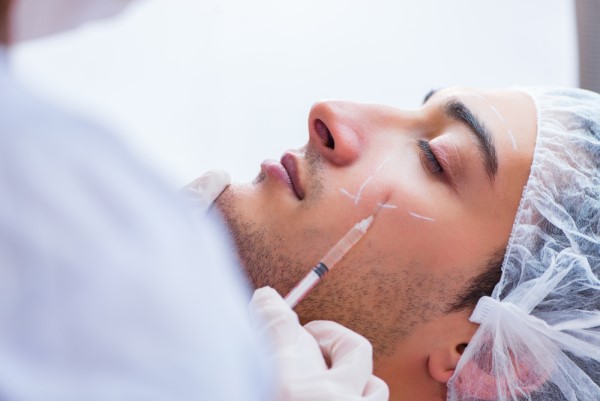The Place of Botox® in Dentistry

Dentists are performing Botox® now! What is the world coming to? This is a common response when the words' Botox' and 'Dentist' are combined in a sentence. However, dentists who use Botox treatments in their work are not being vapid or following the latest money-making fad. Botox has many applications in both medicine and dentistry. It can do much more than decrease wrinkles and improve facial appearance.
Information about Botox
Botox is the brand name of a toxin produced by a species of bacteria known as Clostridium Botulinum. The toxin acts on the nerves and can be poisonous or lethal in large amounts. However, Botox stops a particular nerve from transmitting signals to its muscle in tiny doses. As a result, the muscle remains relaxed, which results in many benefits, reduced wrinkles being the most commonly known.
Botox treatments and cosmetic dentistry
A smile makeover can give a patient an amazing smile with teeth that are brighter, proportioned, and perfectly aligned. However, all this perfection can create a stark contrast between the patient's teeth and their lower face. This means that the perfection of a smile makeover can call attention to the wrinkles and loose skin on a patient's face. It only makes sense that a person might want to reduce fine lines around their lips to match their stunning new smile. With Botox treatments, a cosmetic dentist can provide their patients with a more complete smile makeover. The patient will benefit from having a mouth free of fine lines and wrinkles to complement their new and improved teeth.
Botox and orthodontics
Many are unaware that Botox can be an important aid during orthodontic treatment. The point of orthodontics is to align badly-positioned teeth. With this in mind, it is important to remember that the muscles around the mouth can cause misalignment of the teeth or contribute to it. In such scenarios, the mouth and jaw muscles will slow down or even reverse the progress of an orthodontic appliance. This is where Botox can help. Regular doses of Botox will relax the problem muscles and stop them from clenching and moving the teeth back to their old, undesirable positions.
Botox and TMD
Botox can be one minimally invasive way to treat pain caused by Temporomandibular joint disorder or TMD. TMD is an uncomfortable condition that causes a patient persistent pain in the jaw, face, and even the head. It often occurs due to a badly-aligned jaw or constantly clenched jaw muscles. Often, treatments for TMD can include oral devices, surgery, and medication. However, in some cases, Botox is an option. For example, when a problem with the jaw muscles causes TMD, a dentist may choose to inject their patient with Botox. The treatment relaxes the muscles and frees the teeth and jawbone from the constant stress of a clenched jaw.
Botox and bruxism
Bruxism or teeth grinding is a common cause of TMD, worn down teeth, and jaw misalignment. It happens when a person clenches their jaw unconsciously and uncontrollably. It often occurs while the person is sleeping, and they do not even realize they are doing it. Usually, a dentist is the first person to notice bruxism when they note signs of it in the wear and tear on a patient's teeth. It is important to start treating bruxism as soon as possible to prevent further damage to the teeth. Botox treatments cut off transmission from the motor nerves that serve the jaw muscles. This leaves the muscles relaxed and unable to contract at an intensity that could cause damage. In addition, the treatments can give patients relief as they receive treatment for an underlying cause like stress or malocclusion.
Botox and removable prosthodontics
Some people have trouble adjusting to dentures. This is because their mouth muscles keep moving in a way that dislodges the dentures from their proper position. That is why prosthodontists are now exploring the use of Botox to help their patients get used to dentures. The logic is that Botox treatments will stop the muscles in the mouth from dislodging the dentures.
Post-treatment and recovery
While side effects and complications are rare, they can happen. Patients may experience minor symptoms, including slight discomfort, headache, swelling, muscle weakness, and bruising. We provide patients with pre-treatment instructions to prevent discomfort and possible side effects during and after treatment. We will also discuss after-care practices, including what to avoid and how to care for the treated area to help with healing and recovery. In general, patients should avoid touching, rubbing, or itching the treated area for at least 24 hours. Patients should contact their provider immediately if any extreme symptoms, such as persistent redness or swelling, arise at any point after treatment.
Botox could open up new frontiers in dentistry
Now you know that Botox is not only used by cosmetic dentists, but it is also useful in treating a number of dental conditions. Contact us to find out how Botox can work for you or to schedule a consultation.
Request an appointment here: https://www.mytotaldentistry.com or call McCarthy Dentistry at (740) 546-5178 for an appointment in our Marietta office.
Check out what others are saying about our dental services on Yelp: Botox in Marietta, OH.
Recent Posts
If you are one of the many individuals who suffer from TMJ, you may be researching the effects Botox® has on this problem. Believe it or not, it can work to help some of the unfortunate aspects of this condition. TMJ can sometimes make everyday activities and simple things we take for granted, like chewing,…
Botox® is becoming a very popular way for patients to treat TMJ. This dental issue is caused by the muscle dysfunction that connects your jawbone to your skull. It is supposed to act as a hinge, but it can often become inflamed and irritated. TMJ causes such discomfort and pain. This can make the simple act…
Botox® is no new word to our society today. The name is the registered trademark for botulinum toxin A. It is majorly known and used in the cosmetic surgery industry to eliminate wrinkles and lines on the face. However, it is interesting that this substance derived from botulinum toxin has a long history of therapeutic…
Facial Botox® is a minimally invasive and effective cosmetic treatment with dental applications. When looking to undergo this procedure, it is smart to learn as much as you can about what it entails. This article answers some common questions about facial Botox®.Botox® is a derivative of botulinum toxin type A, a neuromodulator that is injected…


